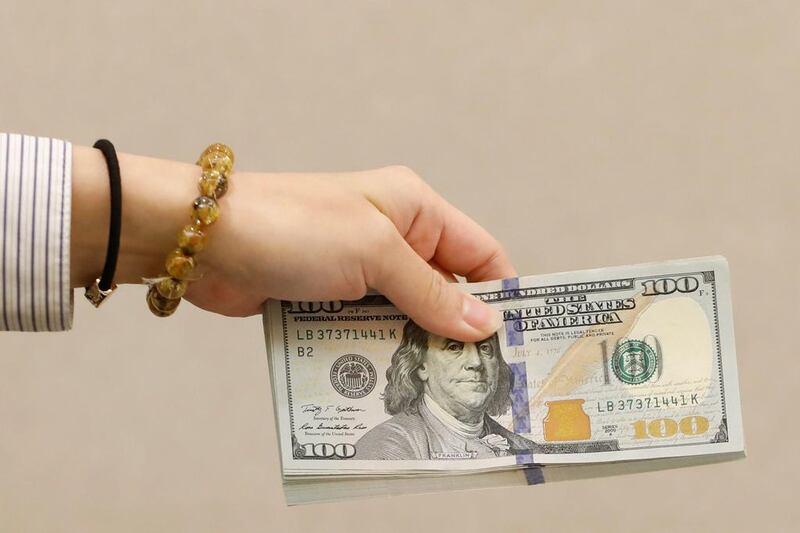The US dollar weakness continued through July as the US Dollar Index, a measure of the value of the greenback against a basket of major currencies, tanked to a 13-month low. For the better part of the year, we have been campaigning on the back of a stronger dollar, however, it seems this trade is exhausted. Markets seem to have a similar mindset – the most recent Commitment of Traders Report, which gauges how speculative and large investors are positioned in the market – showed that for the first time in a year, markets are now positioning to short the dollar.
There are a couple of key themes which put the dollar at risk – the upcoming Federal Reserve action (or lack thereof) and deteriorating political sentiment in Washington. If we start with the former, the dollar reached its zenith back in December when the Fed became the first central bank to kickstart its rate hike cycle. However, after promising an additional three hikes in 2017 (and delivering on two thus far) the dollar has fallen more than 9.6 per cent as these rate hikes are seemingly more and more priced in. The growth in the US data docket has also waned through the second and third quarters; there have been slowdowns in several of the key US prints including GDP, employment and inflation data – all key indicators for the Fed in deciding future policy. The political uncertainty in Washington also does not help dollar prospects. The second failed attempt of repealing Obamacare last week shook the currency longs and the most recent blow to the current administration, the resignation of White House spokesman Sean Spicer, also cast long shadows on president Donald Trump's ability to unite a gridlocked Washington. Political doubts have translated into economic doubts in US investors' minds. With Mr Trump already embroiled in a Russian meddling scandal, this trend is set to continue going forward.
Considering this, any improvement in the US data docket in the weeks ahead would spark rallies in the dollar for the reasons given above; stronger US data would spark optimism of Fed action come December and vice versa. The Fed is set to meet this week (the announcement is due out on Wednesday at 10pm UAE time) and although there is no chance that they will be hiking rates this month, it will be the accompanying statement which will be a catalyst to drive market volatility. We expect the Fed's body language to be based on a wait and watch approach which could be perceived by markets to be slightly dovish and could see further weakness in the greenback. Also on tap this week is the US second quarter GDP print due out on Friday at 4.30pm UAE time. Expectations are for a strong rebound in the figure at 2.6 per cent, this is up from a previous reading of 1.4 per cent. Any figure upwards of 2.5 per cent on this print could spark fresh dollar buying through next week.
Again, keep an eye out for improving sentiment in Washington and the US data docket to gauge intraday volatility in the currency going forward.
The euro bulls were in full swing, benefiting from the dollar weakness, coupled by bullish prospects in the euro zone and optimism that the European Central Bank (ECB) president Mario Draghi will also look to raise rates as early December or reduce the ECB balance sheet, or a combination of both. Dubai Gold and Commodities (DGCX) euro contract hit 23-month highs this month at 117.16 and the strength is expected to continue. At the time of writing, the EUR/USD pair was trading at a key 50-month moving average of 1.1660, a July closing above which would expose 1.19 levels through the end of the summer months. This target is very achievable considering the divergent paths of the Fed and the ECB through quarters three and four of this year.
The British pound also finds itself amidst a mini renaissance – and now finds itself consolidating at 1.30 levels. Like its European counterpart, the Bank of England (BOE) is facing the prospects of their own rate hike by the end of this year, amidst an improving UK data docket. This week will be particularly interesting for the pound – Wednesday (12:30pm UAE time) sees the release of the second quarter UK GDP, expected at 1.7 per cent versus a previous reading of 2 per cent. This data point will be closely scrutinised and will no doubt drive BOE expectations going forward.
And finally, the Swedish krona continues building gains against the dollar. USD/SEK has fallen more than 8.7 per cent over the course of the past five months and technically, the SEK sees a move towards 8.09 in the months ahead.
Gaurav Kashyap is a market strategist at EGM Futures







